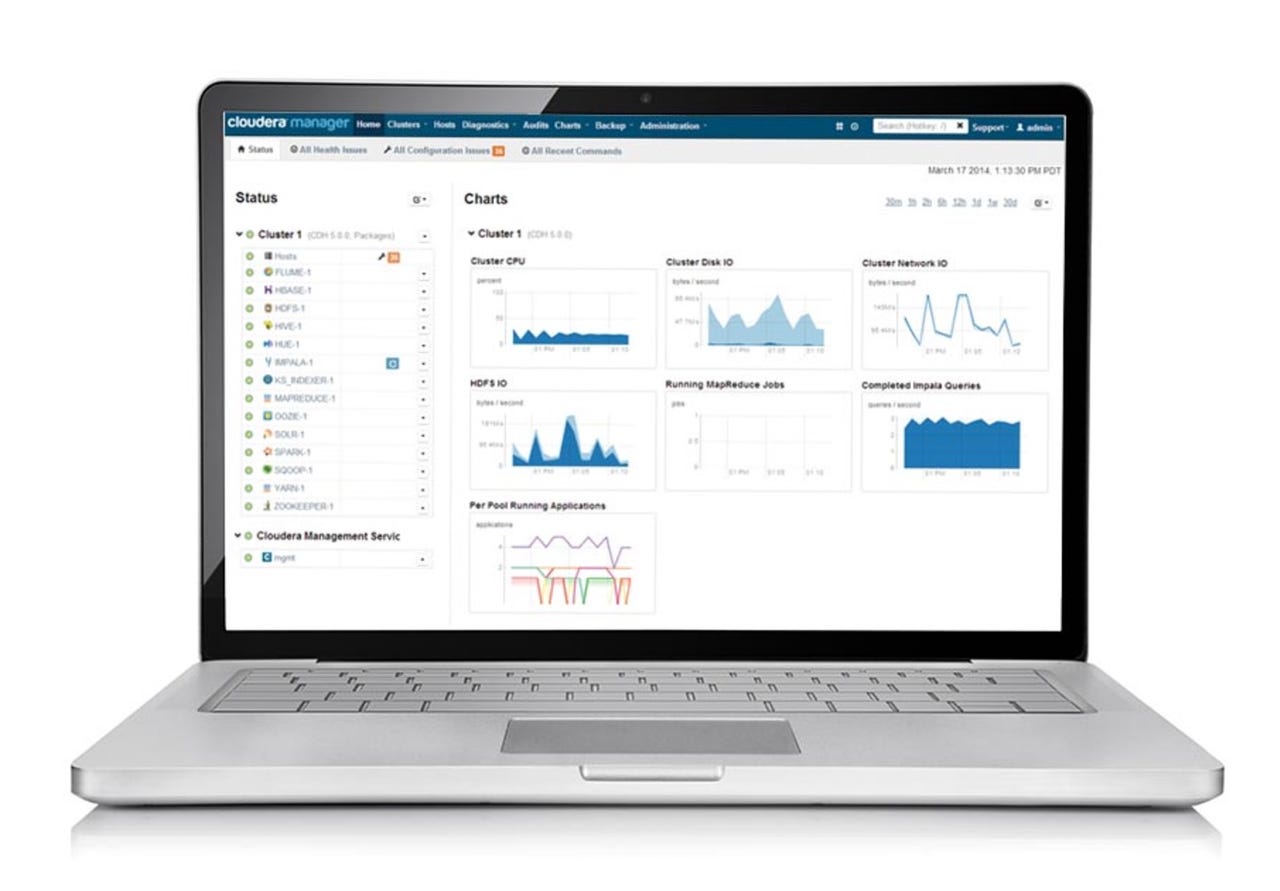Cloudera approaches IPO with long-term vision, but can it justify its valuation?


Cloudera has filed to go public, indicating it will bring its big data management business to the New York Stock Exchange under the symbol CLDR, but there is some skepticism about the company even as it has more than doubled its sales.
When it hits the market in about a month, share prices could reportedly give the company a valuation of about $4 billion -- the same valuation it received three years ago when Intel acquired 22 percent of the company. However, some doubt the company's financials can justify that valuation.
In a letter included with Cloudera's S-1 filing, co-founder Mike Olson assured potential investors they're playing the long game.
"You should expect us to continue to favor long-term growth over short-term results, and to invest when doing so is likely to make us a stronger standalone company, even if that return is years out," Olson wrote.
Also: Cloudera focuses message, pleads the fifth on IPO rumors | Beyond the elephant in the room, Cloudera wants to talk to the business | Cloudera, MapR and others focus on consolidating the sprawl | The cloud is disrupting Hadoop
Cloudera's S-1 filing revealed that for its fiscal year that ended Jan. 31, 2017, the company's revenue totaled $261 million. That's a 57-percent growth over the previous year, when it brought in $166 million. Its operating cash outflows increased to $116.6 million, from $90.5 million a year prior. Net losses decreased from $203.1 million to $187.3 million.
Red Hat, the benchmark for an open source-based enterprise software company, reported fiscal 2017 revenue of $2.4 billion with net income of $254 million. Red Hat's market capitalization is $15.4 billion. Rival Hortonworks, which is already public, reported 2016 revenue of $184.5 million with a net loss of $251.7 million. Hortonworks market cap is $670 million.
Cloudera said in its S-1 filing that it expects "to continue to incur net losses for the foreseeable future."
Even so, Olson argued in his letter, Cloudera is "willing to take risks -- embracing new technologies like Apache Spark ahead of the rest of the market, for example - in order to innovate and lead." And while Intel may have overestimated Cloudera's worth in 2014, Olson said that Cloudera, in fact, initially "underestimated" the market potential that comes from the confluence of big data and the cloud.
"The cloud is better, faster, and much cheaper than it was" when Cloudera was founded in 2008, he wrote. Additionally, "there is more data available than ever before. We thought we had big data back then. We were only getting started."
Cloudera faces some significant challenges. For one thing, as big data management becomes increasingly important, its competition is likely to grow. Cloudera already faces competition from legacy data management companies like HP, IBM, and Oracle, as well as cloud giants like Amazon Web Services, Google Cloud Platform, and Microsoft Azure.
Cloudera also cited competition from other open source companies like Hortonworks -- both companies have traditionally been Hadoop-focused. Hortonworks went public in 2014, and its current market cap should cast further doubt on the prospects for Cloudera's valuation. The companies have similar financials, with significant sales and marketing outlays. While Cloudera reported 57 percent year-over-year growth, Hortonworks in February reported a 51-percent increase in full-year revenue.
Along with competition, Cloudera's basis in Hadoop presents another challenge. Cloudera was one of the earliest Hadoop providers, and the popular big data program is expected to grow in the coming years. However, deploying Hadoop in the cloud can be challenging, which presents a problem as workloads increasingly move to the cloud.
Olson stressed at the Cloudera Analyst Conference last month his company is more than just "a Hadoop software distributor." Indeed, Cloudera's S-1 filing notes its platform "integrates 26 distinct open source projects, 18 of which were created by our engineers."
"We have pioneered the hybrid open source software development model, or HOSS," Cloudera boasted. Its commitment to the open source data management ecosystem, its filing said, "helps us recognize and champion emerging standards, as we did when we led the market by embracing Spark as a complement to the original MapReduce data processing engine."
Still, there's a ways to go: While Cloudera says it enables multi-cloud strategies, just around 18 percent of its Global 8000 customers were running the Cloudera platform in the cloud as of Jan. 31, 2017.
As the enterprise moves to the cloud, Cloudera will have to carefully navigate its relationships with public cloud providers, said IDC analyst Carl Olofson. Currently, for instance, Amazon is both a platform for Cloudera and also a competitor with EMR. "I think that kind of 'co-opetition' is going to be around for a while," Olofson said.
With that in mind, Cloudera has to convince customers that its capabilities meet customer needs more thoroughly than anything the public cloud providers can offer. "The thing about being Amazon or Google or any of those -- they're providing all these technologies, where Cloudera is focused on this one relatively narrow range, so they ought to be able to do a better job," Olofson said.
Once it's convinced those customers of its value, Cloudera will have to keep them happy. In its S-1 filing, Cloudera noted that its business model is based on a "land and expand" strategy that uses the initial sale as a foothold to increase revenue per customer. That will require updating its technology to meet the demands of the market without creating too much disruption for customers. In other words, Cloudera should be successful, Olofson said, if it "continues to be nimble with the kinds of technology they offer for various problems that need to be solved, while at the same time providing some continuity for their customers."
That's easier said than done as technology quickly evolves -- even in the hardware realm, with the introduction of non-volatile memory.
"I think it's very hard to predict at this juncture how any business like Cloudera is going to do because there are so many variables," Olofson said.
Hadoop's creator looks at upcoming tech that will unlock big data
